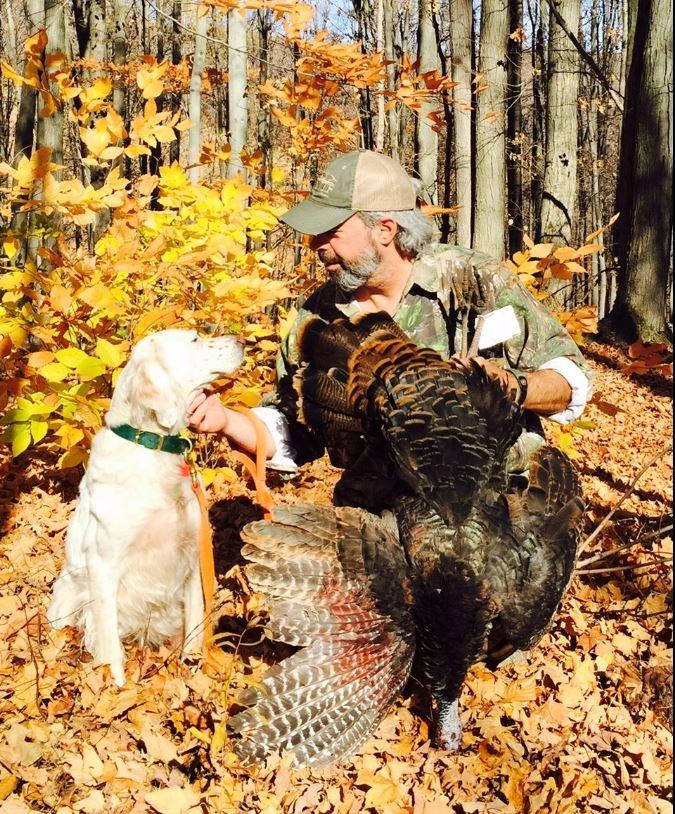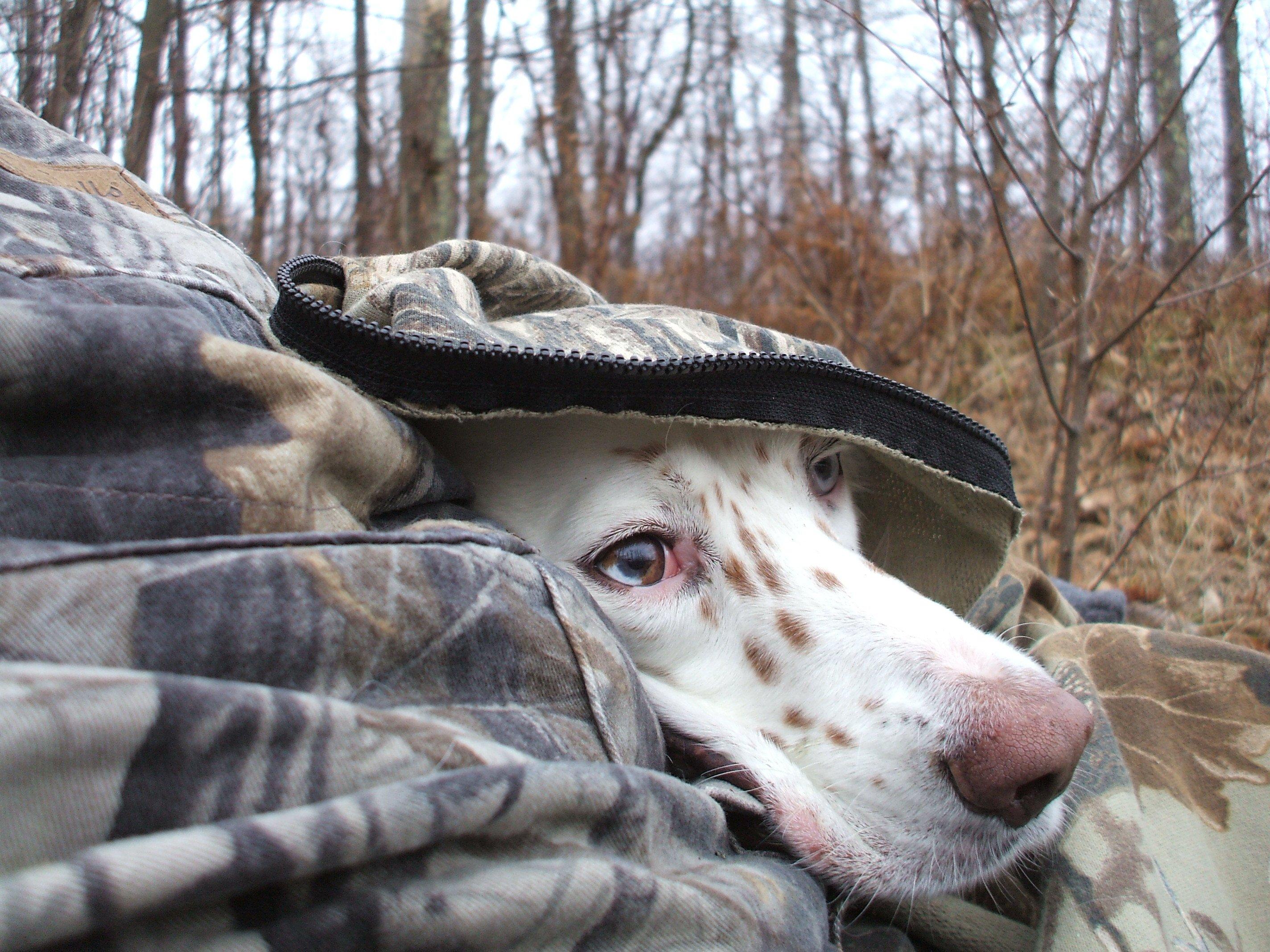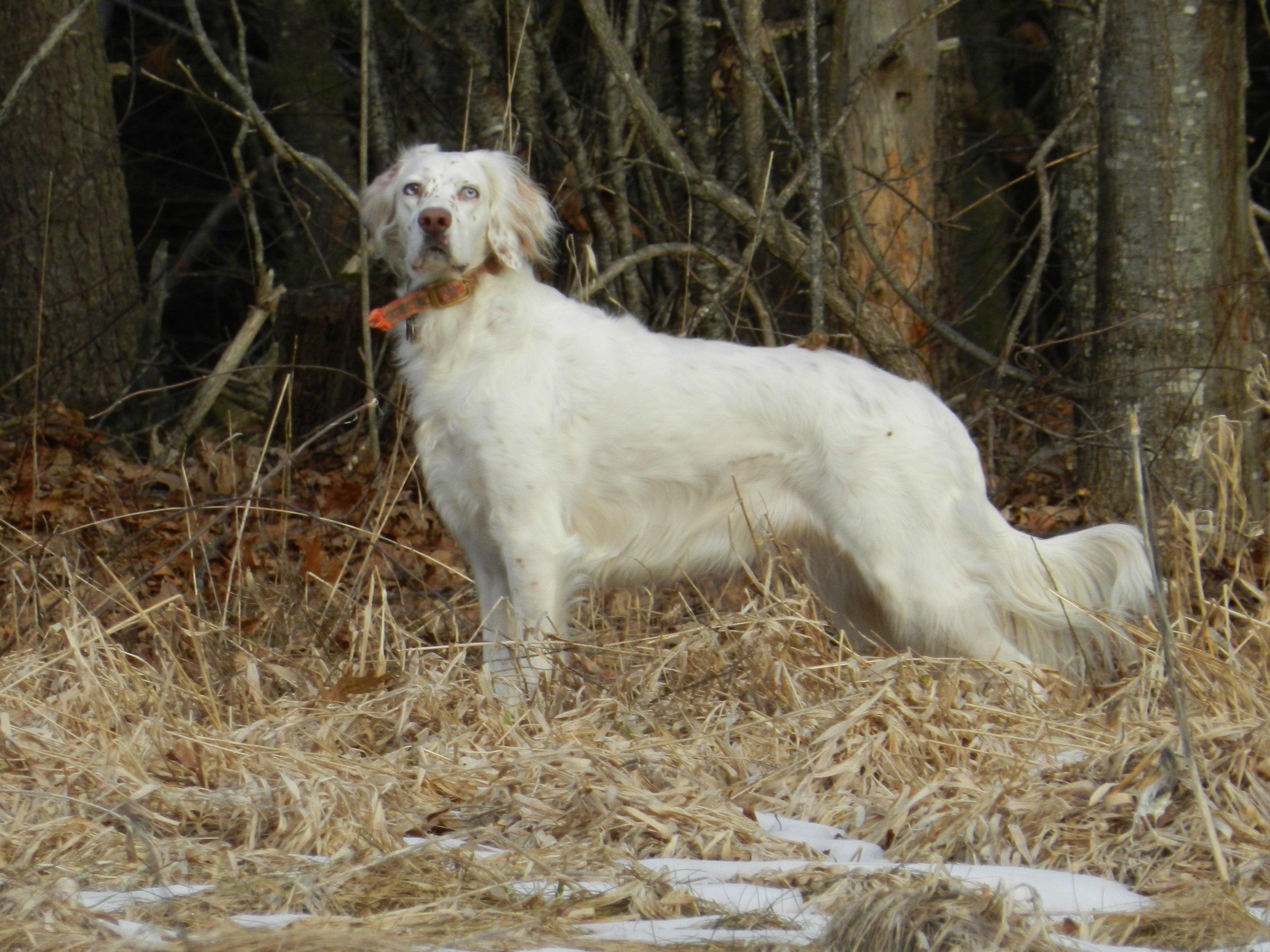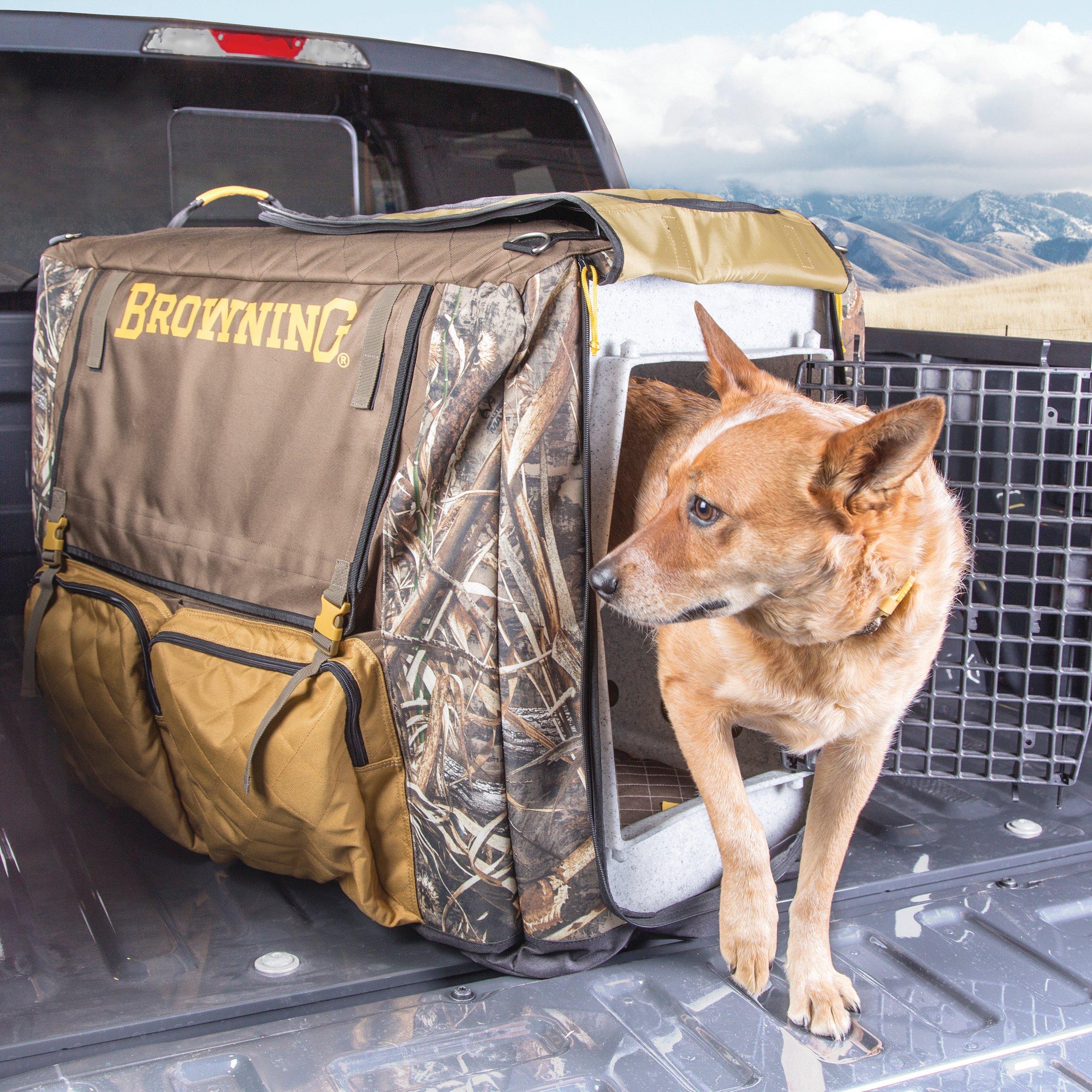Trained Dogs Help Find and Scatter Fall Flocks for the Call Back
The hunting tactic is simple: A trained dog follows fall turkey scent to find and then scatter autumn flocks. In states where it's legal — nearly 30 as of this writing — the hunter then gathers his or her canine, makes a setup much as he or she would in spring, while also concealing the dog.
Turkeys are separated to gain a calling advantage, as they want to be together. The hunter calls, and birds come back to the break site - or not. That's the fun of it. The sounds of a dozen scattered wild turkeys converging on you is something to enjoy. The fact your dog found them with your help adds to the pleasure. Haven't tried it? Why not? Here's how.
History Lesson
When I started fall turkey dogging in the early 1990s, only 11 states permitted it. New York (at Turkey Trot Acres), and Vermont did, so I hunted there. These days Maine, where I make my home base, and New Hampshire, just across the border, do too. Pennsylvania as well, where I was born, raised and first hunted, allows fall turkey hunting with dogs — others do too, around the country.
As interest and understanding of this hunting tradition increases, some states have provided opportunities. Though it may appear this is a recent phenomenon, hunting turkeys with dogs is included in the first three turkey hunting books ever published.
Literary evidence of turkey dogging can be traced to Edward A. McIlhenny and Charles L. Jordan in the classic title, The Wild Turkey and Its Hunting (1914), which devotes an entire chapter to the subject of hunting turkeys with dogs. Tales of Wild Turkey Hunting, Simon W. Everitt's 1928 book, contains accounts and photographs of turkey dogging throughout. Henry E. Davis' The American Wild Turkey (1949) also includes turkey dogging commentary in the chapter on hunting methods.
Read all three to understand the origins of our modern tradition.
As with tactics for waterfowl, upland birds and other game species hunted with dogs today, so are time-honored approaches for finding and scattering fall and winter flocks with canines where the tactic is legal, before trying to call birds back into range.
As with other modern hunting strategies, there's an inherent sense of fair chase and sportsmanlike conduct where turkey dogging is concerned. This adds to the challenge.
Bonus tips: How to Hunt Fall Turkeys
Why Use Dogs?
Gregarious wild turkeys — once out of your hunting range — will often return to a flock-break location, and your nearby setup, coaxed there by your calling and that of other birds. Four-legged hunting companions can scatter turkeys better than you can, assuming they're trained to the task. The birds want to be together, so they often (but not always) come back.
As a hunting tradition, turkey dogging combines the companionship and trained skills gun dog enthusiasts enjoy when pursuing other upland species, while also including the fall and winter turkey hunting component. There's a real pleasure in watching your dog work.
In the end of course, the strategy is a tool. It helps you find and scatter flocks, but usually only if you are a serious fall turkey hunter. You need to hunt your canine where you'll likely locate birds. You need to scout and piece the puzzle together.
Bonus tips: Check out the American Wild Turkey Hunting Dog Association
Finding a Dog
English setters and pointers (especially those who prefer to flush birds and not hold point), Labrador retrievers (a flushing/retrieving breed), hard-running hounds like beagles, Brittanys and even mixed breeds are capable of becoming decent turkey dogs.
This assumes you take time to become a good fall turkey hunter yourself, and hunt where the dog can find birds.
Boykin spaniels were historically bred in the Carolinas for turkey dogging, though ironically North and South Carolina offer no modern fall or winter turkey seasons as of this writing. Still this breed and others are used throughout much of the country where the tactic is legal (check yours for updated regulations).
Sometimes the modern breeding intention is more deliberate. The late John Byrne, and his son J.T. of Lowry, Virginia, successfully developed a line of Appalachian turkey dogs (English setter/pointer/Plott hound) specifically for turkey dogging. Numerous hunters around the country still go afield with these dogs each fall and winter.
Apart from this willful breeding effort, turkey hunters can still chance at finding a cast-off dog with a strong prey drive, one possessing the nose to find flocks and the desire to scatter them.
Training a turkey dog — any bird-finding canine for that matter — is based on two things: showing the dog what you want it to do, and reading the animal's natural abilities for what it might offer in the field. The marriage of these two elements makes for a reliable hunting partner.
Training Your Dog
Are you a serious fall and winter turkey hunter? Do you live in or near a state that permits it? Chances are you do. Do you have land where you can condition and train your turkey dog in the off-season? Is it legal to do so? To use your dog as a tactical tool during hunting season, you should spend the rest of the year bonding with it.
To do so, regular time in the field is required. Verbal commands include the usual dog-training phrases (sit, stay, whoa, hunt 'em up, etc.) — the simpler, the better, and stay consistent. Whistles can be used when associated with commands. Hand signals paired with your body movements will have your canine paying attention to the way you move through habitats. 
You want a partner, full of character. Build the bond with your canine hunting buddy. Their prey drive and association with these hunting tactics will do the rest.
Ideally a turkey dog should cast ahead, check back to your position, and find turkey flocks. When it locates birds — either by foot, airborne or ground scent, visual contact or all of these — the dog should run at the turkeys, bark to declare the flock's position, then chase lingering singles into the air, ideally in different directions.
After the scatter, the dog should consent to blind time as you try to call separated birds back.
Concealed in a camouflaged bag, or under blind material, the dog should rest calmly as possible as turkeys approach your position. At times the dog's growing excitement may even indicate birds on the approach. Discourage movement though as turkeys can detect it at long distances.
Trying to hide the dog in the blind from the wary eyes of regrouping turkeys sometimes offsets the hunting advantage, but that's part of the challenge. Dogs learn they might even get to see turkeys up close again, and even get their mouth on feathers. Be patient. It's all good.
Bags and Blinds
How do you train a dog to hide? A blind can help out — either pop-up or a low-staked model. Natural cover can assist too (check legal regulations as some states vary on use).
Decades ago John Byrne, the late turkey dog breeder mentioned earlier in this piece, devised a zippered camouflage bag with his wife Miss Sue. In fact variations of this concealment bag are now widely used in the fall and winter turkey dogging subculture.
Go Here: Browning Dog Kennel Cover
To bag train your pup, start young — eight weeks of age is about right. (Same goes for crate training travel.) Begin slowly, by first getting the dog comfortable sitting on your lap or curled up in front of you for varying periods. TV watching time is ideal; introduce them to this tactic outdoors too. Apply this training whenever possible, including live situations with real turkeys.
If it's legal in your state (for training purposes) you can obviously do so in the off-season as well as after scattering flocks. Check yearly as regulations change.
Why We Do It
If you love dogs, as many of us practitioners do, and fall turkeys, this traditional hunting tactic is hard to beat. In truth, covering ground with your canine companion is a pleasure in itself. Scattering turkeys and trying to call them into range adds to it. Sound like fun? It is.
Go here for more Realtree turkey hunting.
Follow us on Facebook.
Steve Hickoff is Realtree.com's turkey hunting editor.
[Editor's note: This article was first published Sept. 26, 2016.]









